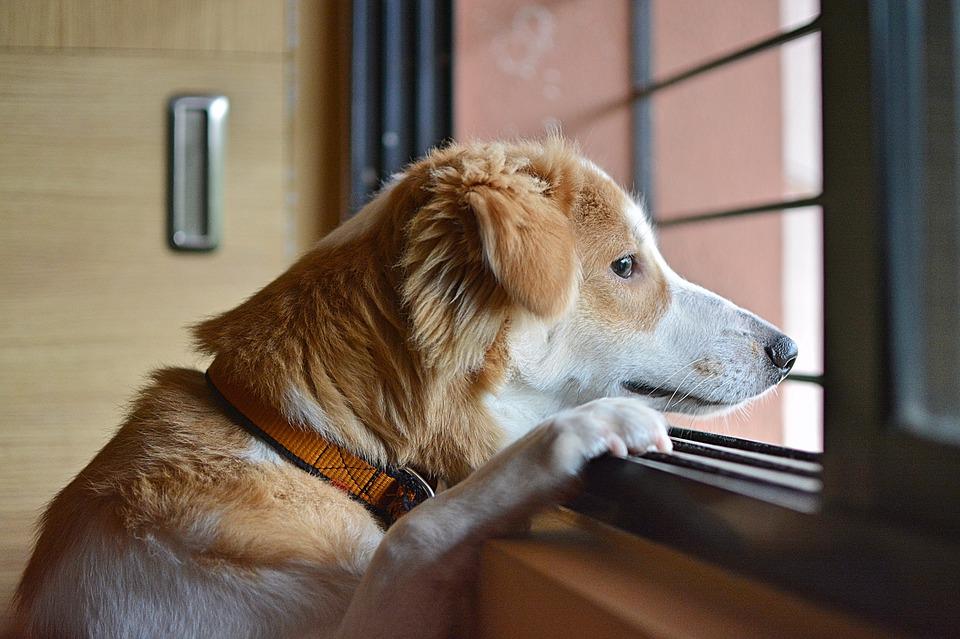Managing Separation Anxiety
How to Help Your Dog
In an ideal world, we could take our dogs anywhere and everywhere we wanted. Unfortunately, that just isn’t the case – and it’s not something that would be in the best interests of every dog, either. Instead, there are times when we have to leave our dogs at home, whether we like it or not. But what if your dog doesn’t like it?
Separation Anxiety Basics
 Unlike a dog who gives sad eyes or a small whimper when left behind, separation anxiety describes anxious or distressed behavior, like a human having a panic attack. These dogs can display several types of upsetting or destructive behaviors, such as:
Unlike a dog who gives sad eyes or a small whimper when left behind, separation anxiety describes anxious or distressed behavior, like a human having a panic attack. These dogs can display several types of upsetting or destructive behaviors, such as:
- Excessive vocalization, like barking or howling
- Urinating or defecating
- Pacing, whining, or trembling
- Drooling, panting, or salivating
- Chewing or digging, especially at doors or windows
- Trying to escape
Separation anxiety can even become so severe, dogs injure themselves in the process.
Understanding Separation Anxiety
First, it’s important to know that separation anxiety is a serious condition you shouldn’t ignore. And, if your dog has separation anxiety, don’t take it personally – it doesn’t mean you did something wrong.
At the end of the day, the exact cause of this distress isn’t entirely known. While teaching a puppy to learn to have alone time can help prevent separation anxiety, it’s not a guarantee they won’t end up with an issue. Some dogs are simply more prone to the condition, others experience something scary when alone, or something triggers the response, such as:
- An abrupt change in schedule
- A move to a new house
- The sudden absence of a family member
Until our dogs can tell us what’s causing their distress, we just have to practice patience and help them cope with the situation.
Managing Separation Anxiety
Unfortunately, there isn’t an overnight fix for separation anxiety. However, you can take steps to tackle the problem and keep your pup as comfortable as possible when you have to leave.
Common strategies for managing separation anxiety include:
- Crate training: create a safe and quiet place where they love spending time alone
- Physical and mental exercise: a tired dog is often more relaxed and content
- “Stay” training: teach your dog to stay, gradually leaving their sight until they can stay alone for 5-10 minutes
- Playing it cool: greet your dog calmly whenever you return from being away
It’s also helpful to work on desensitization and counter-conditioning training. These approaches should focus on reducing stress responses and teaching them that good things happen when you leave. For example, maybe you save those yummy stuffed Kongs for when they’re alone or give them their favorite puzzle toy to work on.
You can even make the idea of your departure less stressful for your dog by picking up your keys or putting on your coat – activities that typically signal you’re leaving – and then going to make dinner or watch TV for a bit. Or toss them a tasty treat before touching your keys. These small steps can help your dog look forward to the signs you’re leaving instead of panicking.
When doing desensitization and counter-conditioning training with your dog, remember to go slowly, only leaving them for short periods in the beginning and gradually increasing the time away.
Finally, don’t forget to talk to your vet if your dog has separation anxiety, especially if it doesn’t improve with any of these approaches. They can offer more suggestions and might recommend medications or supplements to help ease your dog’s anxiety to make your departures easier.

